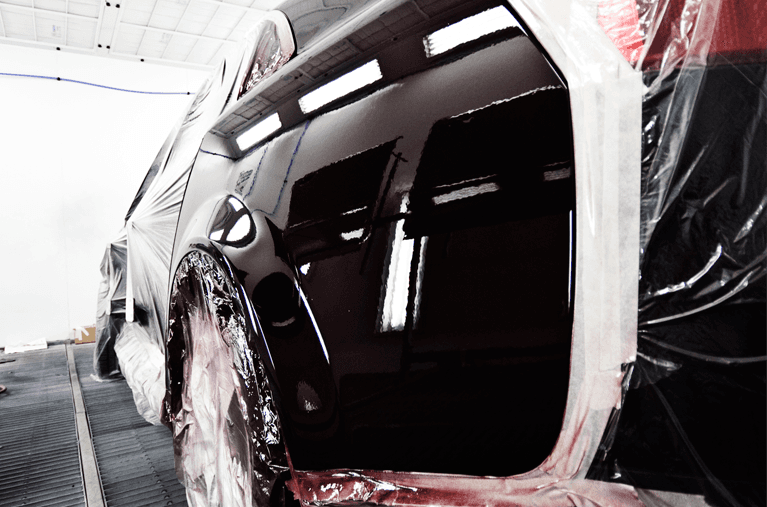In the world of automotive detailing, knowing what sandpaper to use on car paint can make a significant difference. Whether you are a seasoned professional or just getting started with car painting, the right sandpaper is crucial. This guide is designed to help you understand the different types of sandpaper and their applications to achieve a flawless finish.

Understanding Sandpaper Grit
Sandpaper comes in various grit sizes, each serving a unique purpose. The grit number indicates the sandpaper’s coarseness. Here is a breakdown:
Coarse Grit: 40 to 60
Coarse grit sandpaper is used for heavy-duty tasks such as removing old paint or rust. It helps to rapidly eliminate material but leaves a rough surface.
Medium Grit: 80 to 120
Medium grit sandpaper is ideal for shaping body filler and smoothing out surface imperfections. It’s less abrasive than coarse grit, making it suitable for initial preparation of the car’s surface.
Fine Grit: 150 to 220
Fine grit sandpaper is used for final sanding before applying primer or paint. It helps achieve a smooth finish and is essential in the painting process.
The Various Types of Sandpaper
Different types of sandpaper are available, each with specific strengths. Below are the most common types:
Aluminum Oxide
Aluminum oxide sandpaper is durable and suitable for a wide range of surfaces. It is commonly used for sanding metal and wood.
Silicon Carbide
Silicon carbide sandpaper is sharper and harder than aluminum oxide. It is ideal for wet and dry sanding and used for sanding automotive paint.
Garnet
Garnet sandpaper is softer and wears out faster than other types. It provides a smoother finish and is often used for fine sanding of wood.
Ceramic
Ceramic sandpaper is the toughest and most durable. It’s used for heavy-duty sanding tasks and lasts longer than other types.
Step-by-Step Guide on Using Sandpaper on Car Paint
When sanding car paint, it’s essential to follow a systematic approach to achieve the best results. Heres a step-by-step guide:
Step 1: Preparation
Start by cleaning the car’s surface to remove any dirt or debris. This ensures you don’t scratch the paint with particles stuck on the surface.
Step 2: Selecting the Right Grit
Begin with a coarse grit sandpaper if you need to remove significant imperfections or old paint. Gradually move to finer grits for smoothing.
Step 3: Sanding by Hand or Machine
Sanding can be done either by hand or with a machine. For delicate areas, hand sanding is preferable, while a machine can cover larger areas quickly.
Step 4: Wet Sanding
Wet sanding involves soaking the sandpaper in water to reduce dust and achieve a finer finish. It is particularly useful for the final sanding stages.
Step 5: Cleaning Up
After sanding, clean the surface thoroughly to remove any sanding residue. This prepares the surface for the next steps in the painting process.
Common Mistakes to Avoid
Sandpaper can be tricky to use, especially for beginners. Here are common mistakes to avoid:
Using the Wrong Grit
Selecting the wrong grit can ruin your paint job. Make sure to choose the appropriate grit for each stage of your sanding process.
Sanding Too Aggressively
Over-sanding can damage the car’s surface. Use light, even pressure to avoid creating dips or uneven spots.
Neglecting Wet Sanding
Skipping wet sanding can result in a less smooth finish. Always include wet sanding in your process for the best outcomes.
FAQs on What Sandpaper to Use on Car Paint?
We often get questions about using sandpaper on car paint. Here are answers to some of the most common queries:
1. Can I use regular sandpaper on car paint?
No, regular sandpaper can be too abrasive for car paint. Use sandpapers specifically designed for automotive use.
2. How do I know which grit to use?
The grit you use should depend on the task at hand. Refer to the grit breakdown section above for detailed guidance.
3. Do I need to wet sand every time?
Wet sanding is not always necessary, but it is recommended for the final stages to achieve a smooth finish.

Conclusion
Understanding what sandpaper to use on car paint is key to a successful paint job. By using the right grits and types of sandpaper, you can ensure a smooth, professional finish. Remember to avoid common mistakes and follow the proper steps for best results.
For more detailed information on how to paint a car, check out this useful guide at Auto Body Toolmart.
